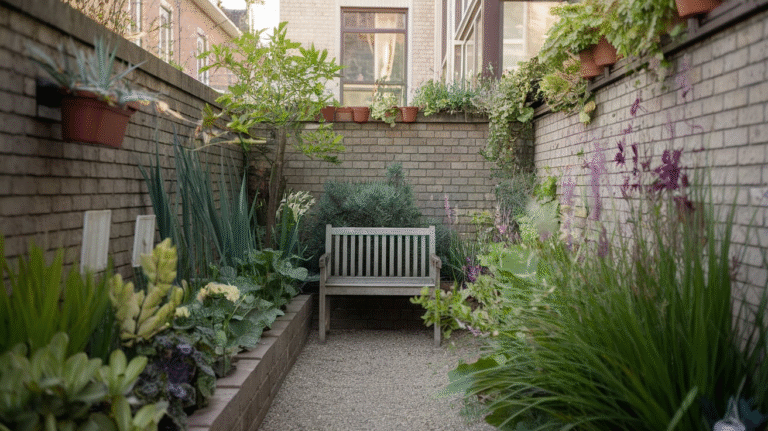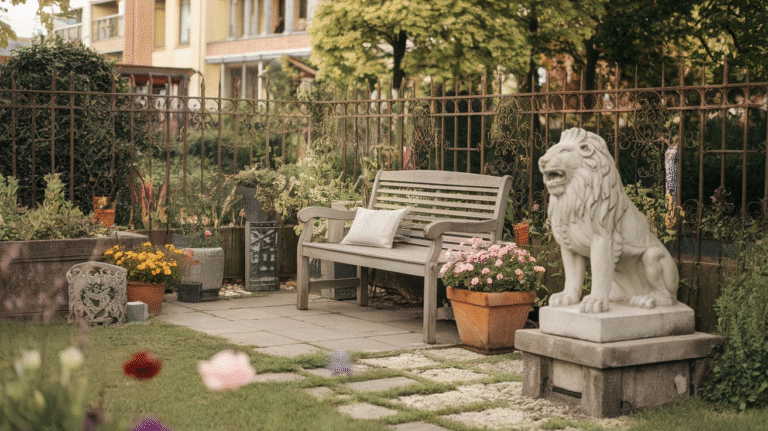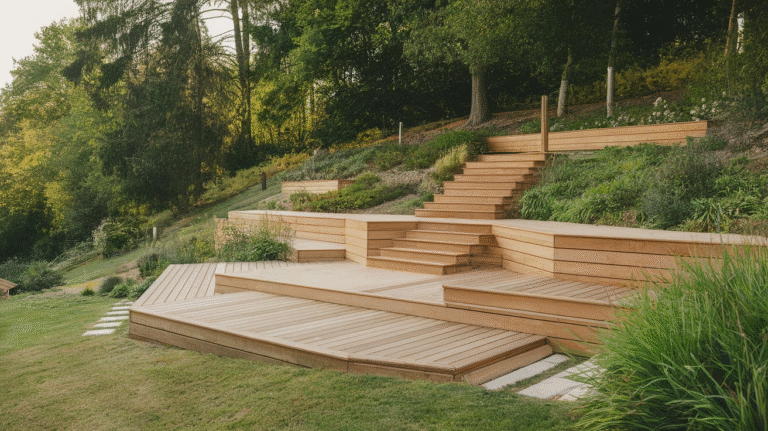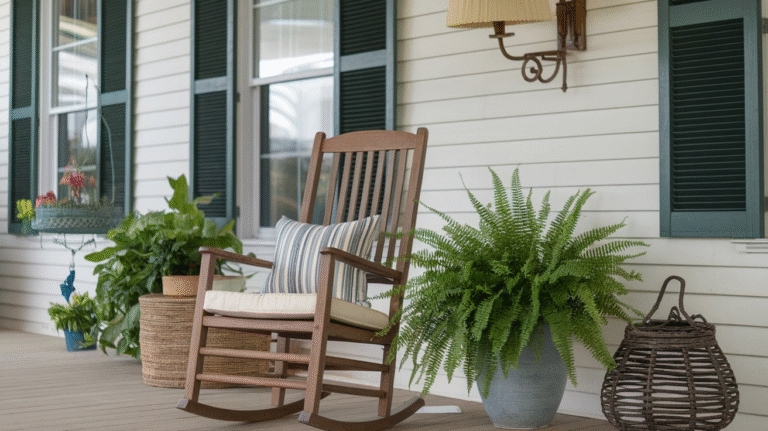21 Fresh Vegetable Garden Ideas for Your Next Outdoor Project

There’s something deeply satisfying about stepping outside and picking your dinner straight from the dirt.
Vegetable gardening isn’t just about food—it’s about flavor, self-reliance, peace of mind, and let’s be honest, a bit of bragging rights.
Whether you’re working with a few square feet or an entire backyard, these 21 fresh vegetable garden ideas will help you grow smarter, not harder.
1. Raised Beds for Easy Growing
Raised garden beds are like giving your vegetables a VIP section in the garden.
They’re elevated, neatly contained, and easier on your back—especially if you’ve spent one too many hours hunched over in the past.
They warm up faster in spring, drain better, and allow for custom soil mixes. Plus, they reduce weed growth and can extend the growing season.
Use cedar or recycled composite boards for durability, and keep each bed no wider than 4 feet so you can reach the center without stepping in.
Personal tip? I made mine from leftover deck wood. A little sanding and linseed oil, and voilà—garden chic on a budget.
2. Companion Planting for Natural Harmony
Companion planting is like arranging seating at a dinner party—some vegetables just get along better.
Tomatoes love basil, carrots adore onions, and beans? They’re the social butterflies.
By growing certain plants together, you can repel pests, maximize space, and even boost flavor.
For example, planting marigolds around your veggies can deter nematodes and aphids, while borage attracts pollinators and repels tomato hornworms.
According to the University of Minnesota Extension, companion planting can reduce pest damage by up to 60% when done correctly.
3. Vertical Gardens for Small Spaces
No space? No problem. Go vertical. Using trellises, hanging baskets, or wall-mounted planters can help you grow upward instead of outward. Think climbing beans, cucumbers, sugar snap peas, and even zucchini.
I once used an old ladder as a makeshift vertical garden, and my peas looked like they were scaling Everest. It saved space and gave my garden an architectural flair.
Bonus: vertical gardening improves air circulation, which means fewer diseases and healthier crops.
4. Square Foot Gardening for Efficiency
This method is a godsend for urban gardeners. Developed by Mel Bartholomew, square foot gardening divides your beds into 1-foot squares, each with its own crop.
This approach makes plant spacing foolproof, cuts down on weeding, and produces higher yields in smaller areas. You’ll need a raised bed (usually 4×4 ft) and a grid made from string or wood slats.
The stats? According to the National Gardening Association, square foot gardens can grow up to 5 times more produce per square foot than traditional row gardens.
5. Container Gardening for Flexibility
If your outdoor space is limited to a balcony or patio, container gardening is your best friend. Tomatoes, lettuce, peppers, and even root veggies like carrots can thrive in containers.
Make sure you use containers with drainage holes and high-quality potting soil. A 5-gallon bucket? That’s perfect for tomatoes. A deep wooden crate? Great for potatoes.
Containers let you move plants around to chase sunlight or escape storms. They’re portable, pretty, and perfect for beginners.
6. Herb Borders for Beauty and Function
Add a touch of elegance by planting herbs like parsley, oregano, or thyme around the borders of your veggie garden. These herbs not only add visual contrast and fragrance but also attract pollinators and repel pests.
Think of it like a culinary moat protecting your vegetable castle.
Herb borders also create natural paths and define garden zones, making the space look tidy and intentional.
7. Hugelkultur Beds for Sustainability
Sounds fancy, but hugelkultur is just a German method of gardening using decaying wood. You create a mound of logs, branches, compost, and topsoil.
The wood acts like a sponge, storing moisture and feeding the soil as it breaks down. It’s perfect for dry climates or for reducing watering needs.
I tried this on a patch of rocky ground where nothing would grow. A year later, the tomatoes were practically climbing out of the bed to say thanks.
8. Cold Frames to Extend Your Season
A cold frame is a low-tech greenhouse: a box with a transparent lid that traps heat. Use it to start seedlings early in spring or grow cold-hardy crops like spinach and kale into the winter.
Even a few degrees of warmth can mean the difference between a thriving crop and a frostbitten mess.
Use old windows for lids, and you’ve got yourself a charming, eco-friendly season extender.
9. Companion Flowers to Boost Pollination
It’s easy to forget how important flowers are in a vegetable garden. Add blooms like nasturtiums, calendula, or cosmos to lure in bees and butterflies.
These companions aren’t just pretty—they’re practical. Increased pollination = more fruit.
Nasturtiums, for instance, also act as a trap crop, drawing aphids away from your precious veggies.
10. Mulching for Moisture and Weed Control
Mulch is the unsung hero of the vegetable garden. A 2-3 inch layer of straw, shredded leaves, or bark can retain moisture, suppress weeds, and regulate soil temperature.
Skip the dyed wood chips and use natural materials. I swear by straw—it’s cheap, effective, and adds nutrients as it decomposes.
Pro tip: avoid piling mulch directly against plant stems to prevent rot.
11. Drip Irrigation for Water Efficiency
Watering by hand? It’s meditative, sure—but also inefficient. Drip irrigation systems deliver water directly to the roots, minimizing evaporation and waste.
A study from Colorado State University found that drip irrigation can reduce water usage by up to 70% compared to traditional methods.
Set it up with a timer, and you’ll be sipping lemonade while your tomatoes get a steady drink.
12. Interplanting for Continuous Harvest
Don’t just plant everything at once and wait. Mix fast-growing crops like radishes or lettuce between slow-growers like broccoli or peppers.
This way, you’re always harvesting something, and the soil stays active and productive.
I like to tuck green onions between rows of carrots—they mature quickly, and their smell helps deter carrot flies.
13. Keyhole Gardens for Smart Composting
Keyhole gardens are circular raised beds with a composting basket in the center and a path that gives you easy access—forming a keyhole shape from above.
Popular in dry regions, these gardens recycle kitchen scraps and graywater directly into the soil.
They’re water-wise, nutrient-rich, and absolutely brilliant if you want to reduce food waste while feeding your veggies.
14. Trellised Tunnels for a Magical Harvest
Want to make your garden feel like a secret hideaway? Build a trellised tunnel out of metal arches or bamboo and grow climbing veggies like beans, cucumbers, or squash overhead.
Not only does this maximize vertical space, but it also creates a shaded path where you can duck in to harvest—like nature’s produce aisle.
Plus, kids love it. It’s like Narnia for zucchini.
15. Edible Landscaping for Beauty and Bounty
Who says vegetable gardens have to be utilitarian? Mix your lettuces with lavender, tuck kale between roses, and edge walkways with purple basil.
This blend of function and form is called edible landscaping, and it lets you grow food without sacrificing curb appeal.
I once had rainbow chard in a flower bed, and guests thought it was an ornamental plant. Joke’s on them—I made it into soup that night.
16. No-Dig Gardens for Soil Health
The no-dig method is exactly what it sounds like: you layer compost and organic matter on top of the soil rather than tilling.
This preserves the soil structure, protects beneficial microbes, and helps reduce weed germination.
It’s also less work and surprisingly effective. Charles Dowding, a leading advocate, reports yields 30% higher than traditional digging.
If you’re tired of battling weeds every weekend, this one’s for you.
17. Rotating Crops for Long-Term Success
Growing tomatoes in the same spot every year? That’s a recipe for disease buildup and nutrient depletion.
Use crop rotation to switch up what you grow in each area annually—root veggies one year, legumes the next, then leafy greens.
This prevents pests from settling in and keeps your soil balanced. It’s like taking your garden on a little vacation every year—everyone benefits.
18. Garden Paths That Make You Stay Awhile
A garden needs flow. Lay down gravel, stepping stones, or bark mulch paths to navigate your veggie beds easily and keep things tidy.
It also reduces soil compaction, which means better root health and higher yields.
Bonus: a well-designed path encourages you to linger longer in your garden—and the longer you stay, the more you’ll tend and harvest.
19. Pest Barriers for Protection
You don’t need pesticides to protect your garden. Use floating row covers, netting, or copper tape to keep critters away.
I had a showdown with cabbage moths one summer and finally beat them with mesh tunnels. It felt like I was building veggie bunkers—but hey, they worked.
Physical barriers are effective, chemical-free, and often reusable season after season.
20. Succession Planting for Maximum Output
Why stop after one harvest? Succession planting involves sowing crops in intervals so you get multiple rounds of veggies.
Plant lettuce every 2 weeks, or follow spring peas with summer bush beans. You’ll be amazed how much food you can coax out of a single bed.
It keeps your garden—and your kitchen—constantly productive.
21. Raised Row Gardening for Clean Structure
This hybrid between raised beds and in-ground planting uses mounded rows about 12 inches high, with walkways in between.
It improves drainage, creates defined structure, and gives you the flexibility of tilling or no-dig approaches.
It’s a smart choice for larger plots and gives that satisfying look of a well-organized field.
Final Thoughts
Vegetable gardening isn’t just a weekend hobby—it’s a delicious rebellion against bland store-bought produce and an invitation to connect with nature every day. The ideas here aren’t just creative—they’re practical, sustainable, and deeply satisfying.
Whether you’re growing heirloom tomatoes on a rooftop, experimenting with hugelkultur in the suburbs, or creating a trellised tunnel your kids will remember forever, remember this:
Your garden doesn’t have to be perfect. It just has to grow. Mistakes will happen. Pests will visit. Some seasons will be bountiful, others a bust. But the joy? The joy is constant.






